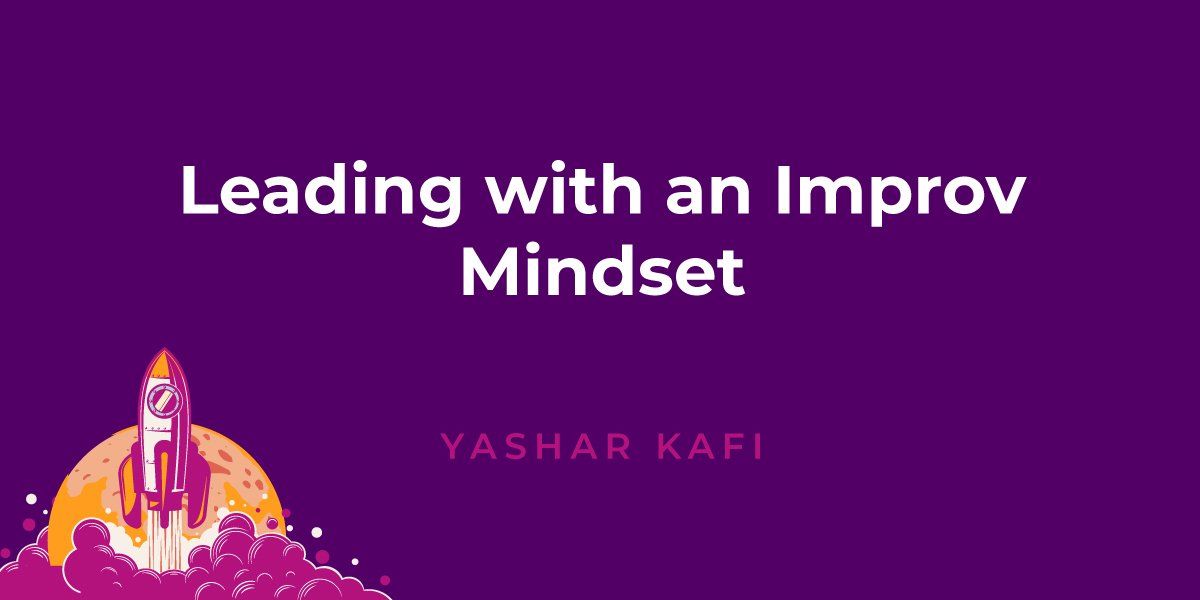Leading with an Improv Mindset
I’m a big fan of improv. You know, the type of performances—like stand up or acting and theatre—that are improvised as you go along rather than using pre-written scripts. Performers “wing it”—making it up as they go.
I’m such a big fan because it applies to many areas of life—including workplace and leadership roles in particular. Imagine how groundbreaking it would be if we could all lead with an improv mindset. So I figured I’d dedicate an article to what this means and would look like in action.
1. Leading with Spontaneity
A primary tool of the practice of improv is an exercise where you take the thing the person before you said (it could be anything) and elaborate upon it with a “yes, and…” without skipping a beat. It gets wild, like a verbal mad lib game. You’d be amazed at how fun and interactive it is and how many creative and unexpected gems come out of it.
Not only can this be applied to life—helping you be more spontaneous and free with yours —but taking lessons from improv can also help make you a better leader. If you take improv’s “yes, and” attitude and apply it to work situations and leading teams, you will be amazed at how it can transform your organization.
So, let’s talk spontaneity: Sadly, spontaneity has been given a bad rap. As a leader, sometimes spontaneity is seen as being careless and risky, and instead, you hear that a true leader takes the “wise” and stable (proven) traditional route of doing things by the book. However, this is not inspiring. Instead, as a leader, you want to trust your intuition (which fuels spontaneity), but you want to encourage your team to do likewise.
One way you can encourage this is by having regular brainstorming sessions, where you gather your team and have them write down their immediate thoughts on relevant subjects that affect your organization. But don’t stop there! Talk about these intuitions they’ve shared, and even give your own (spontaneous) feedback on what they’ve shared. You will be amazed at the fruit it bears.
2. Leading with Agility
Another facet of improv is agility—adapting on the fly. And if there’s ever been a time when we’ve seen the benefits of having an agile mindset, it’s during this pandemic. The pandemic has forced many leaders to adapt to a constantly changing situation by adopting a more agile management and leadership style.
While this more agile leadership approach may have sprung from a scary situation, it’s an incredible asset. It allows leaders to be better equipped at facing surprises and high-pressure situations that arise without fear. Why? Because they have adopted the agile mindset (and taught their team to as well), where they allow room for inventive and creative solutions “off the cuff” to address any curveball situation. Because let’s face it: The old traditional rule book doesn’t have a chapter on the trick pitches.
3. Leading with Creativity
If improv is anything, it’s creative. And what is creativity, at its very core? I would wager that creativity is the inspired thinking that fuels the ideas that, in turn, launch innovation. And I am not alone in recognizing its massive importance in the workplace. According to the World Economic Forum, creativity is one of the top three skills global executives say is essential for 2020 and beyond.
So, as a leader, how do you create a culture of creativity and innovation? You encourage out-of-the-box thinking by increasing your team’s capacity to experiment. Allow yourself to lead with spontaneity, agility, and creativity. And give them the tools and space they need to do the same while forging new frontiers. You won’t be sorry.
To learn more about how new kinds of leadership can transform your organization,
contact us.




